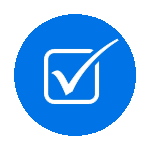Chapter 10. Internal Audit Reporting, Communication, and Follow-up
Introduction

This chapter focuses on the critical aspects of internal audit reporting, communication, and follow-up, providing a comprehensive guide to effectively conveying audit findings and ensuring actionable responses. It emphasizes the importance of clarity, objectivity, and engagement in the audit process, from drafting reports to verifying the implementation of recommendations. It offers insights into crafting effective audit reports, communicating findings to stakeholders, the follow-up process, utilizing data visualization in audit reports, and best practices in audit communication. It discusses the importance of writing clear audit findings, incorporating measurable recommendations, and maintaining objectivity and fairness throughout the report.
Communicating findings to stakeholders is addressed next, outlining the process of identifying key stakeholders and tailoring communication styles to suit different audiences. Strategies for presenting challenging findings, facilitating meetings, and handling stakeholder questions and feedback are discussed to ensure effective engagement. This section also highlights the importance of documenting stakeholder communications and considers ethical considerations in sensitive communications. The follow-up process is explored in depth, emphasizing the establishment of a follow-up schedule, tracking the implementation of audit recommendations, and verifying corrective actions. Reporting follow-up results to management and the board, addressing non-compliance, and the role of follow-up in continuous improvement are detailed, with case studies illustrating successful follow-up and remediation efforts.
Data visualization in audit reports is introduced to enhance the interpretability and impact of audit findings. This section covers the benefits of using visual data, selecting appropriate charts and graphs, tools and software for creating visualizations, and best practices for integrating visuals into reports. Common pitfalls in data visualization and examples of compelling data visualizations in audit contexts are also presented. Finally, best practices in audit communication are outlined, discussing principles of effective communication, maintaining professionalism and integrity, developing a communication plan for audit engagements, and utilizing digital platforms for enhanced communication. Feedback mechanisms for engaging stakeholders, training and development in audit communication skills, and international and cultural considerations in audit communication round off the chapter.
 Learning Objectives
Learning Objectives
By the end of this chapter, you should be able to
- Learn to construct structured, clear, actionable audit reports that effectively communicate findings and recommendations, fostering informed decision-making.
- Develop skills in identifying key stakeholders, tailoring communication styles, presenting challenging findings constructively, and engaging effectively to ensure transparency and accountability.
- Understand methods for setting up and executing follow-up procedures to monitor and verify the implementation of audit recommendations, ensuring continuous improvement and compliance.
- Gain proficiency in using data visualization to enhance the clarity and impact of audit findings, making complex information more accessible and actionable for stakeholders.
- Apply best practices in audit communication, focusing on clarity, professionalism, and cultural sensitivity, to effectively convey information and foster stakeholder engagement.

